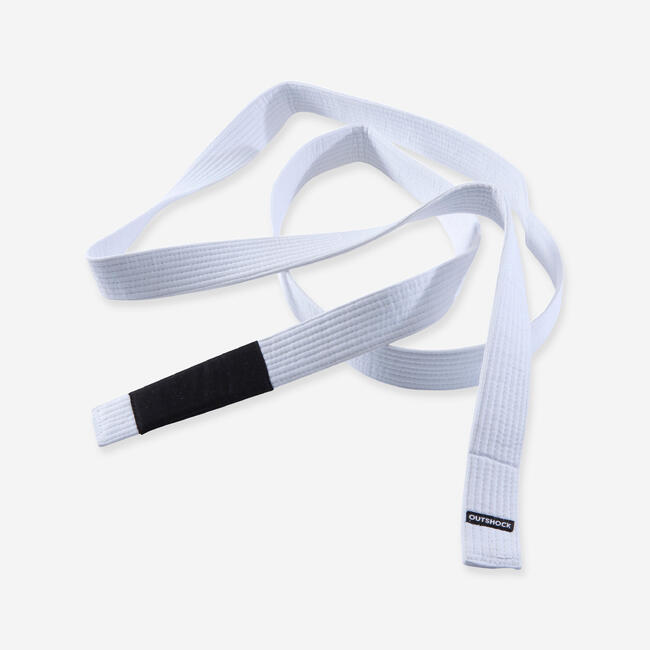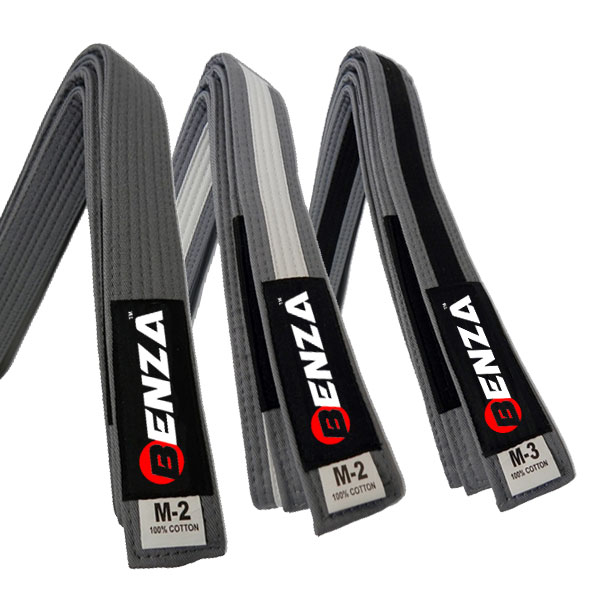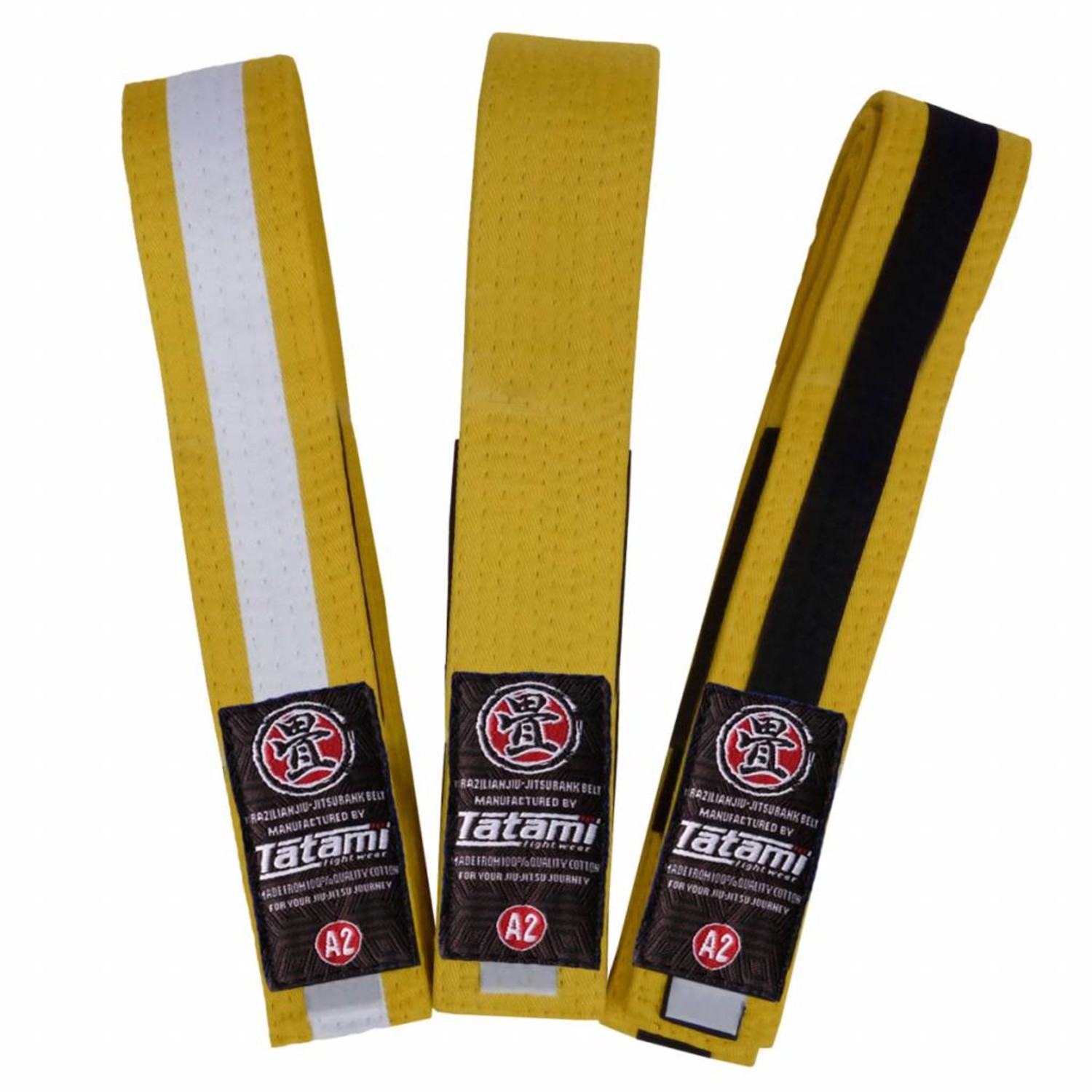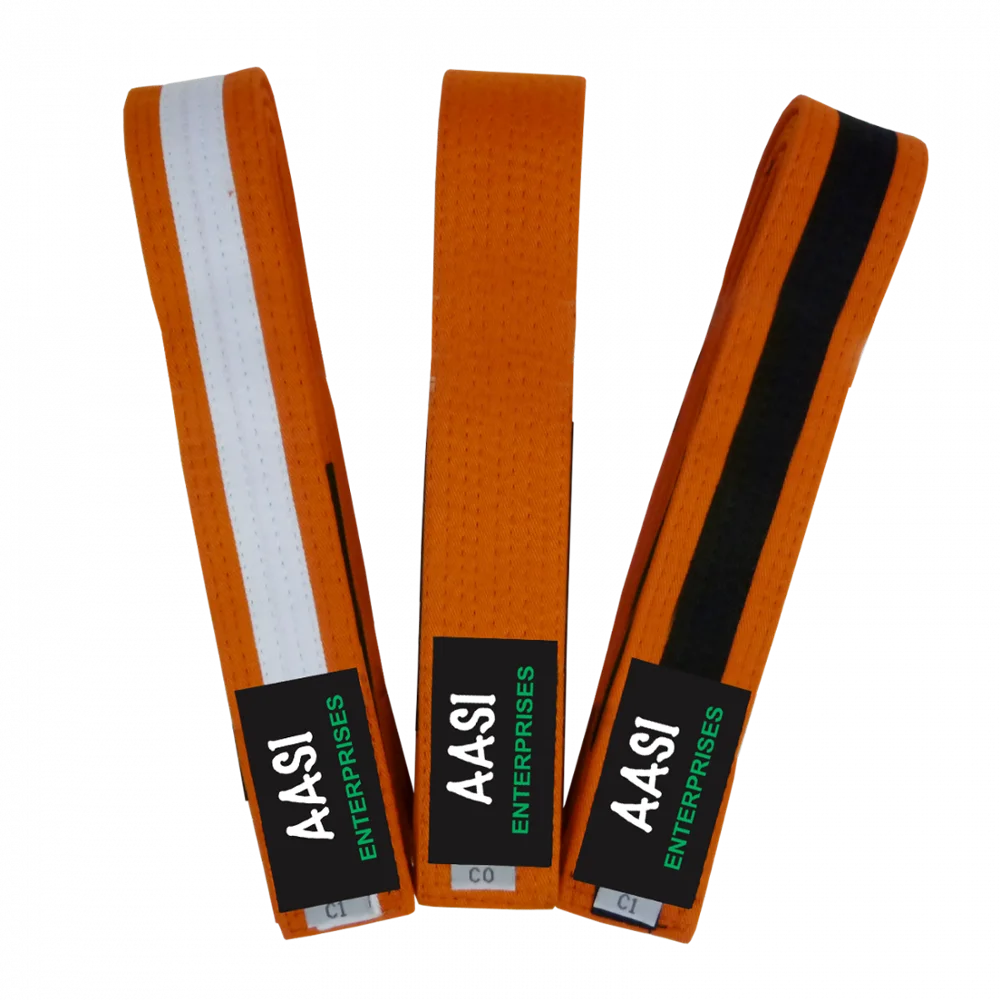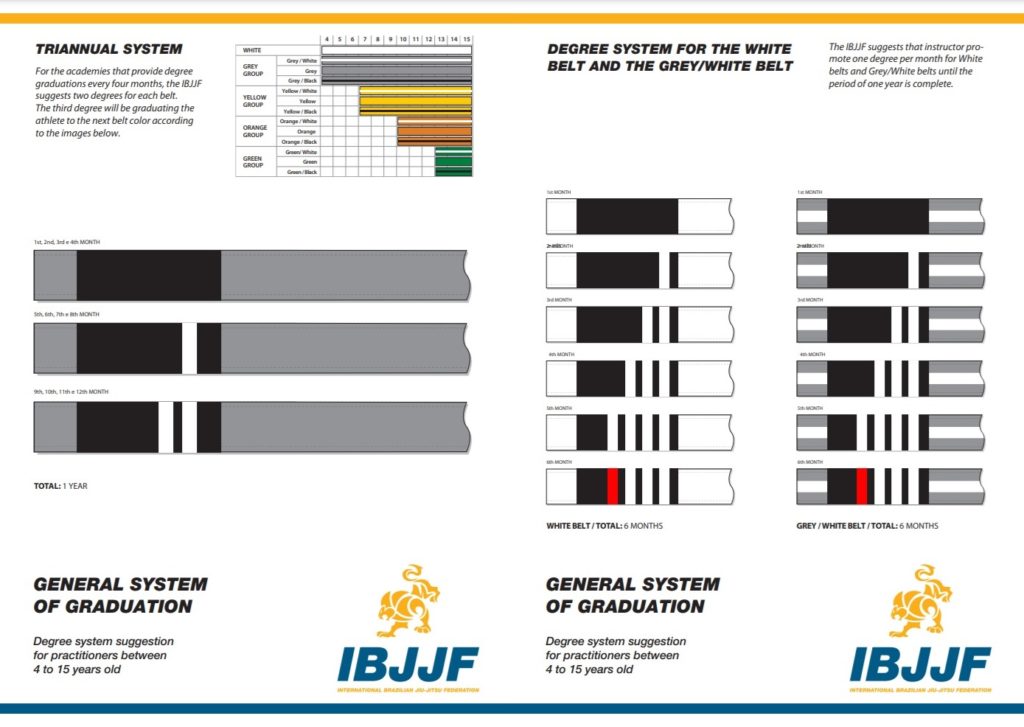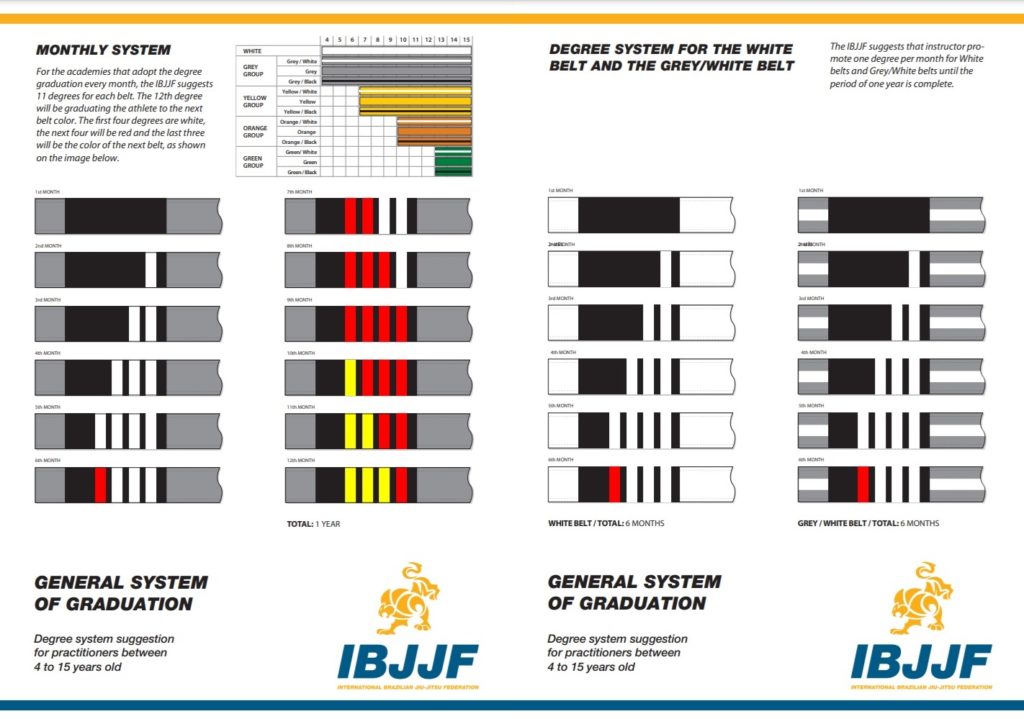Martial arts continue to grow in popularity as a productive and fun kids’ activity for a good reason. It keeps them physically healthy, teaches them to play nice with their peers, and helps them build good habits. Kids’ BJJ, in particular, is a great option, even for younger ones. Its non-concussive nature makes for minimal risk of injury.
Like Brazilian Jiu Jitsu for adults, kids’ BJJ also follow a belt ranking system. Unlike other martial arts for kids, such as Karate, Aikido, and Taekwondo, kids can’t earn their black belt in BJJ until they become adults.
The IBJJF Kids Graduation System applies to any student below 16 years old. It has only five colours, but each colour has been divided into three “sub-ranks”. Once the student turns 16, they transition to the adult grading system.
-
The big difference between ranking systems
The adults’ and kids’ BJJ belt ranking systems differ and overlap in only one colour: white. No matter your age, you begin as a white belt. After the white belt, the kids’ graduation system progresses as follows:
- Grey
- Yellow
- Orange
- Green
The adult belt system uses none of the above colours. Instead, this is how the colours progress for adults after white:
- Blue
- Purple
- Brown
- Black
- Red
Young practitioners graduate to the adult grading system once they turn 16. However, while the belt colour is usually a good indicator of skill, their adult rank is ultimately at the instructor’s discretion. A green belt may graduate to purple, blue, or even white.
This is because the belt system considers a student’s tenancy in a given rank. If a child has been training consistently for several years, they will go up a few ranks, regardless of how much (or how little) they’ve improved.
The adults’ and kids’ BJJ belt ranking systems both use stripes, but they differ in the number of stripes before a student is eligible for the next colour.
What are stripes in kids’ BJJ belts?
Stripes are indicators of progress. It denotes how far along you are in your journey compared to your peers of the same belt colour. All belt colours use stripes in the adult and kids’ BJJ belt system. The total number of stripes before the next rank depends on the graduation system in effect.
This article will cover everything you need to know about the IBJJF belt ranking system for kids.
-
Kids BJJ belt colours
Except for the white belt, Kids’ BJJ belt colours are actually a group of three levels. With four belt colours other than white, the kids’ graduation system has 13 belts. There are two conditions to meet before receiving a promotion, namely:
- The student accumulates the required number of stripes
- The student meets the minimum age requirement
Let’s dive into more detail.
White belt
Whether child or adult, all BJJ students begin with a white belt. A white belt denotes a blank slate, which is what you are when you begin your journey. There is no minimum age for the white belt, and kids as young as three years old may start training in BJJ. Here at TFC we start our kids at 6 years old.
A white belt will graduate to a white belt in the adult grading system.
Grey belts
A white belt will transition to the grey-white belt. After accumulating the required number of stripes, they’ll become a grey belt, then grey-black belt. Like the white belt, there is no minimum age for the grey belts. Students at this rank may graduate to become an adult white or blue belt, depending on their proficiency.
Yellow belts
From the grey-black belt, a student who is at least seven years old will proceed to the yellow-white belt. From there, they’ll become a yellow belt, then yellow-black belt. When they transition to the adult grading system from this rank, they may become adult white or blue belts.
Orange belts
From yellow-black, given that the student is at least ten years old, a student will become orange-white. After which, they’ll become an orange belt, then orange-black belt. Those who graduate to the adult system at this rank may become white or blue belts.
Green belts
Students who are at least 13 years old will then proceed to green-white. After which, they’ll become green belts, then green-black belts. The green-black belt is the highest rank in the kids’ graduation system, after which they will transition to the adult belt system. Green belts may become adult purple, blue, or white belts, depending on the instructor’s assessment.
-
Types of graduation schedules
The general stipulation for the kids’ BJJ belt system is that if you receive a stripe every promotion, you’ll go up one colour each year. BJJ schools have the liberty of choosing how often to conduct promotions, which affects how many stripes there should be before you rank up.
Triannual system
The triannual graduation system promotes students every four months. You can get a stripe in the first promotion, a second in the next one, and go to the next colour in the last promotion of the year. This means your belt will hold a maximum of two stripes before you change colours.
Quarterly system
The quarterly graduation system conducts a promotion every three months. You can get three stripes before you rank up to the next colour.
Monthly system
The monthly system can cause a bit of confusion with reading the stripes. If you get a stripe for every promotion, you can get 11 stripes before you go up a colour. But the BJJ belt can only hold up to four stripes. How, then, do you indicate the number of stripes beyond four?
The answer lies in the colour of the stripes. Each white strip is worth one stripe. Red strips are worth two, and yellow are worth three. So if you see a student with three yellow strips and one red, it means they are on their 11th stripe and will go the next colour on the following promotion.
-
The big problem with the belt system
The belt ranking system in any martial art is supposed to denote the growth of its practitioners. As martial arts rose in popularity and grew widespread in practice, however, we can’t say that it hasn’t been compromised.
Many martial art systems suffered because of commercialization. Some “masters” build schools to make a profit rather than spread discipline. And so came the era of McDojos, otherwise known as black belt factories. Simply said, these schools award black belts to students who don’t necessarily possess sufficient expertise.
What sets BJJ belt rankings apart from the others is that it has upheld the prestige of its rankings throughout the years, despite the commercialization of the sport. This is largely thanks to the standardization of the adult and kids’ BJJ belt system by the IBJJF.
With this standardized system, schools are obliged to follow objective criteria such as age requirements and minimum duration of the tenancy in a given rank. This acts as a gatekeeper, ensuring that each student has spent enough time training before they rank up.
If you enjoyed this article, check out…
What Is the BJJ Belt System and How Does It Work?
What Are the IBJJF Rules in Competition?
5 BJJ Techniques to Submit Your Opponent From the Guard in 2022


